This is the first article in a 4-part series about the Greek island of Ikaria. If you have never heard of it, you can be forgiven for thinking that it is some small place well away from the well-known Mediterranean tourist destinations. A look at a map might surprise you in this case: Ikaria is actually quite large and sits right between Mykonos and Samos in the Eastern Aegean.
I am hoping to serve up a few more surprises for you in the coming weeks. There is plenty to see and do here and a lot of the attractions are quite different from those on other Greek islands.
Let’s start with the basics. You can fly here from Athens. During the holiday season Olympic run daily flights from Athens’ international airport (ATH) to Ikaria (JIK) and Sky Express and Blue Air have recently also started flights to the island. The planes are small, but it only takes some 45-50 minutes to get here. As Olympic are owned by Aegean Airlines you can sometimes get reasonable deals by booking the international and domestic journeys together – although, depending on the conditions of special offers, it can sometimes also work out cheaper to keep them separate. This was the case when we visited Ikaria in June this year.
The airport was opened in 1995. Prior to that the only way to get here was by ferry and this is still the transport of choice for most visitors to the island. We first visited Ikaria in 1988 and in those days the ferries were very cheap, but utterly unreliable. Timetables were little more than statements of intent and mechanical problems could sometimes keep a vessel in port for several days. Things have improved a lot since then and modern boats like Hellenic Seaways’ Mykonos are capable of making the journey from Piraeus to Ikaria in around 6.5 hours. The picture below shows it going past one of Ikaria’s beaches.
In the summer season the Mykonos does the round-trip Piraeus-Ikaria-Samos on a daily basis. It stops off at various other islands en route and thus allows passengers to combine Ikaria with a number of other destinations. There are also sailings by other companies. Generally, however, we found that it is still nigh on impossible to get a meaningful timetable for any of the ferries more than a few weeks in advance.
The peak season on Ikaria runs from the middle of June to the middle of September, with July and August seeing a large influx (of mainly Greek) tourists. We went for the first half of June, a relatively quiet period with the added bonus of abundant wildflowers in many places. The photo at the beginning of the piece shows some of these, with the neighbouring island of Fourni and the western edge of Samos in the background.
Below are more wildflowers, this time in the interior of Ikaria.
The hillsides near the airport were also covered in colourful bloom. The next three shots were all taken within the first hour or so after our arrival.
Of course, many trees are also flowering in the spring. The photo below shows the beautiful bloom on a mimosa tree.
The prickly pears had almost finished flowering when we were there, but we found some at higher levels where the large yellow flowers had not yet wilted.
There are large numbers of (sweet) chestnut trees on Ikaria. Their flowers, especially on a large specimen, look quite spectacular and are completely different to those of the horse chestnut (which is botanically unrelated, of course).
The various flowers attract butterflies, bees, and other insects.
As you will have gathered by now, its natural environment is one of Ikaria’s major draws – it certainly is for me and my wife. This is not the Greece of 5-star hotels, infinity pools, golf courses, or marinas full of expensive yachts. Nor does the island have a wealth of picture-postcard villages or places of historic interest. Its appeal lies primarily in its beautiful and very varied landscapes, its unhurried pace of life, and its extremely friendly people.
I thought long and hard about how to structure my four little pieces. My first inclination was to define a single theme for each article, but on reflection it is probably better to mix things up a bit. It might come across as a bit chaotic, but hopefully makes for more interesting reading.
As to themes, one could quite easily put together a 17-part series on Ikaria’s churches alone – don’t worry, I have no intention of doing so! There are churches, small chapels, shrines, and monasteries literally all over the place. Some are more interesting than others, of course, but most are worth a few photos. Below are two examples, simply to illustrate the variation in terms of styles and scale.
I shall sprinkle further examples into the other pieces and will also give you a glimpse of the interior of a couple of them.
When we first came here 29 years ago, we wanted a beach holiday. That remained the case for several years after that, when we returned with our small son in tow. There are quite a few nice beaches on the island. Below is a shot of a small cove near Armenistis in the North. Our son learned to swim here.
The water is equally clear on the other side of the island. The pebbly beach below, not far from Manganitis, is referred to as ‘Seychelles’.
Again, there will be a few more pictures of beaches in the other parts of the series.
A couple of my earlier remarks and photos have already suggested the presence of large hills. In fact, Ikaria is pretty mountainous. The highest peaks exceed 1000m and whilst that might not seem a lot compared, say, to Alpine altitudes, you need to keep in mind that here you are starting from sea level. The landscapes at the top are completely different to what you see near the coast. Bizarre towers like the one below look almost man-made, but are actually the result of erosion (of the softer layers between the boulders).
We love the boulder-strewn areas on the ridge between the North and South of the island. Very few tourists ever get to see them.
The mountainous terrain does not make for easy walking, but the walks are generally very rewarding. Below are a couple of photos showing the vistas you encounter.
When I said that the villages are not generally picture-postcard material, this does not apply to other motifs. The shot below, of a disused little taverna, in my opinion would look good on a postcard.
The same perhaps applies to the next photo, of some locals enjoying their coffees/beers and having a chat outside the village café.
If you have been to Greece, you have probably encountered waiters, menu in hand, trying to persuade you to come into their restaurant. You will not come across that on Ikaria. People are friendly, but not pushy. The food tends to be rustic, and I mean that in a very positive sense: good, honest, down-to-earth stuff. You get the stalwarts of Greek cuisine like the moussaka and the grilled octopus below, but you may also find more unusual dishes which have either long since disappeared from the menus in the larger tourist centres or were never there in the first place. I shall give you some examples in due course.
Cats are a stereotypical element of a Greek holiday and Ikaria is no exception. I tried to get the one below to look into the camera, but he refused categorically.

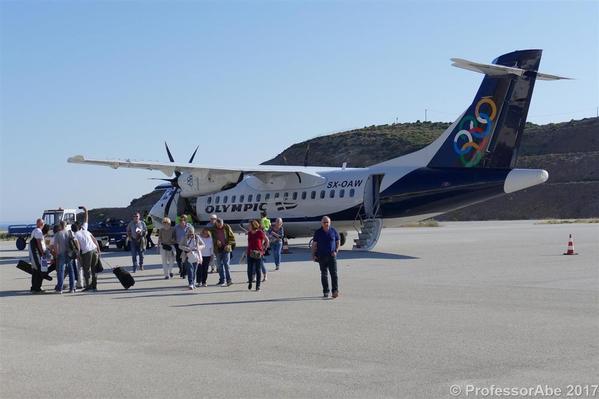
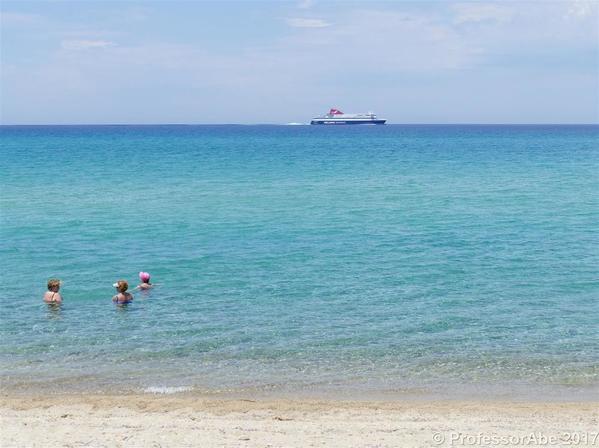
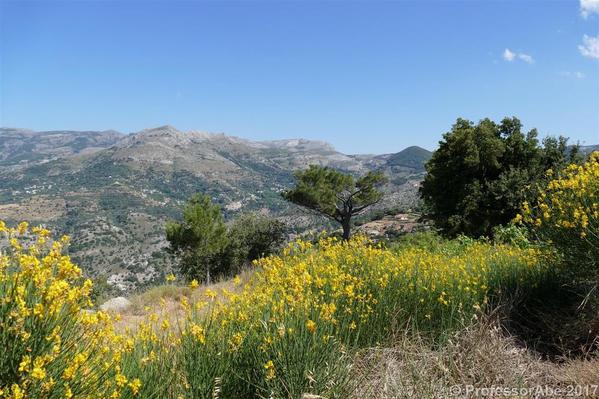
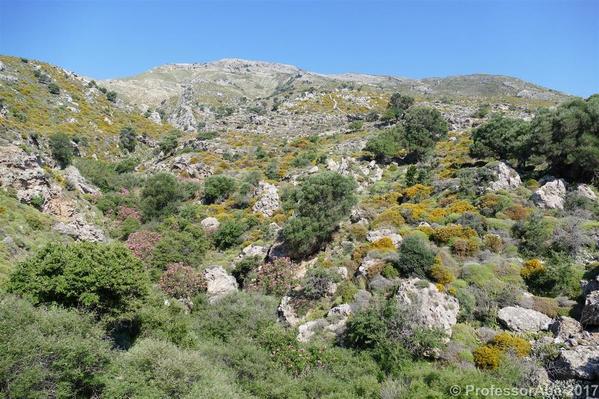
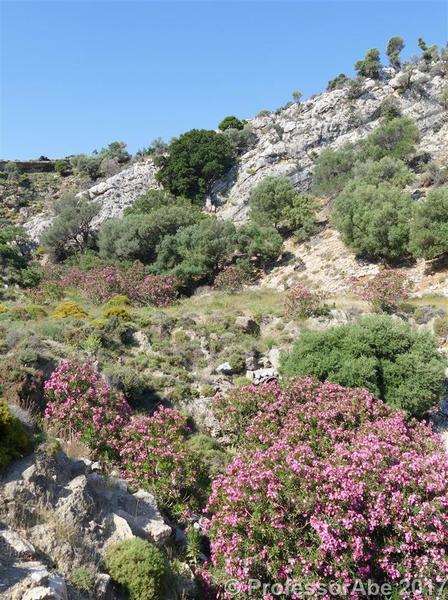
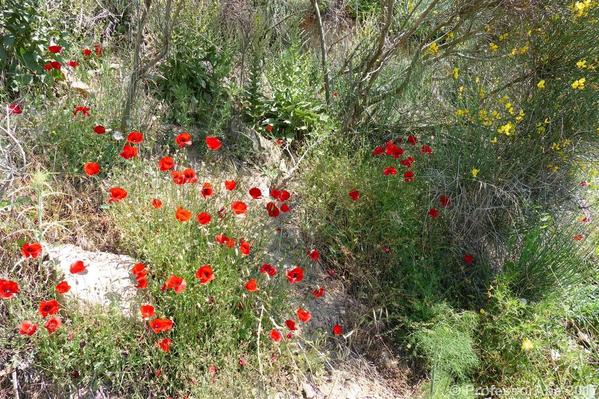

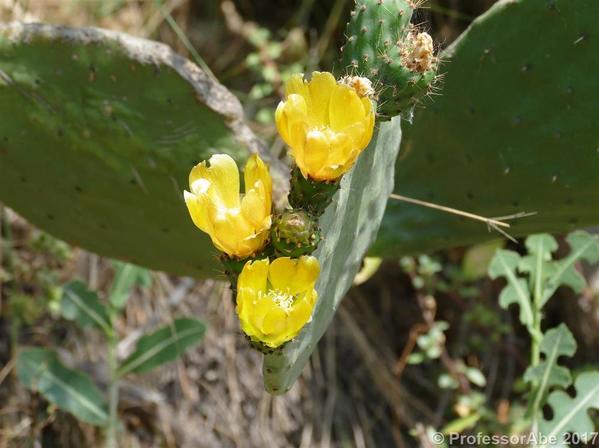
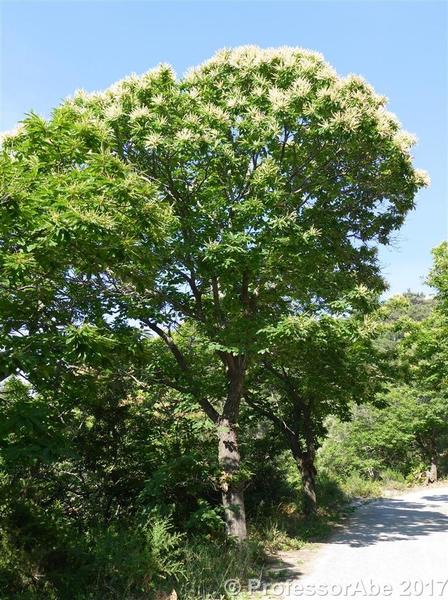
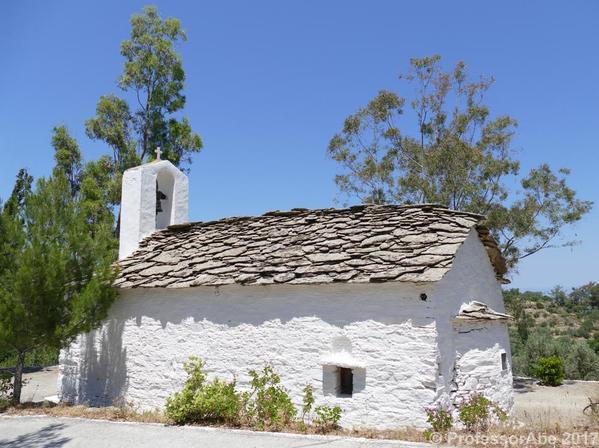
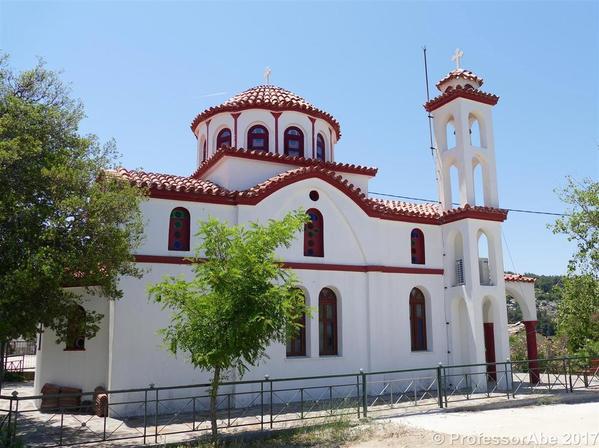
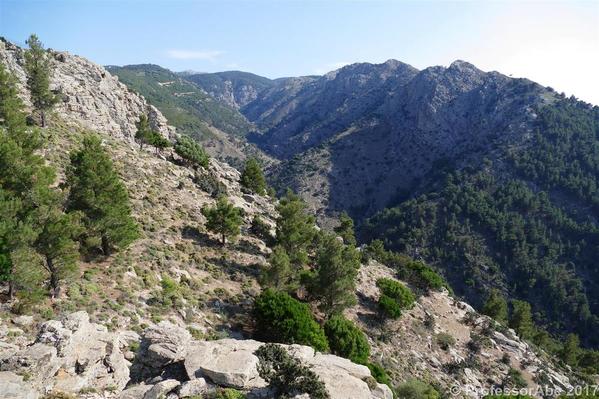
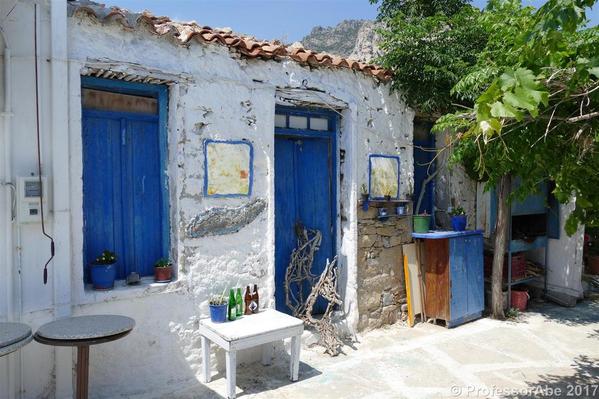
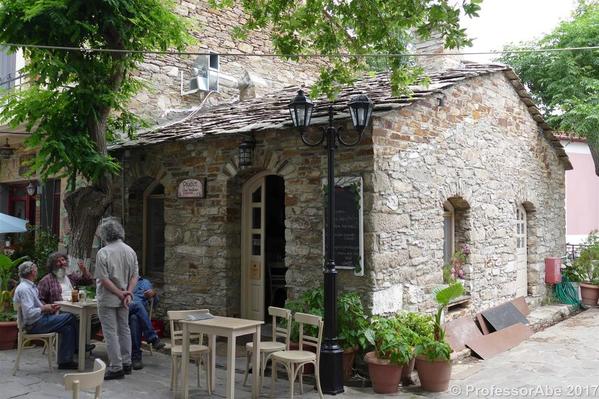
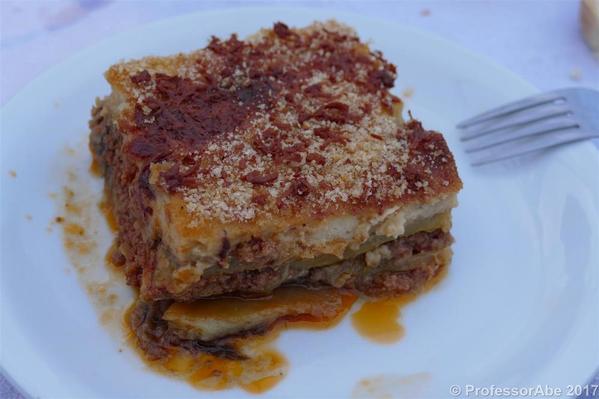
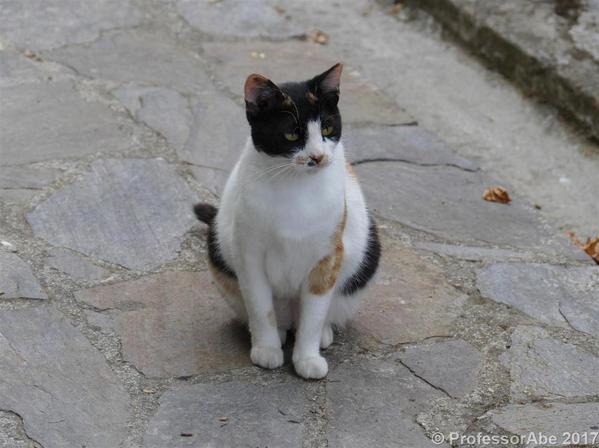
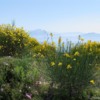






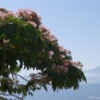









Comments (4)